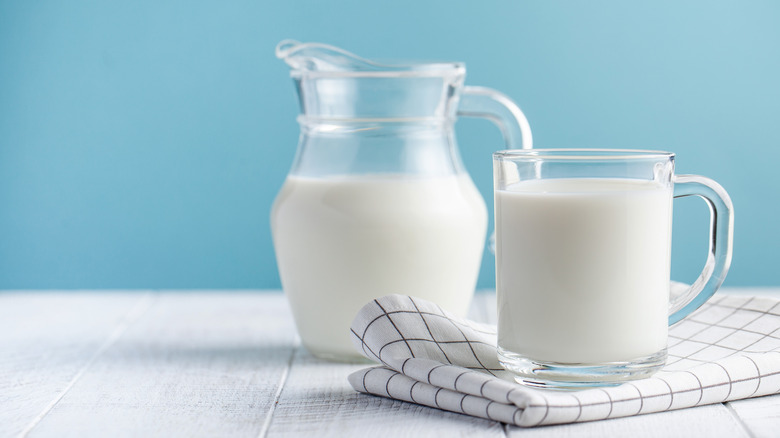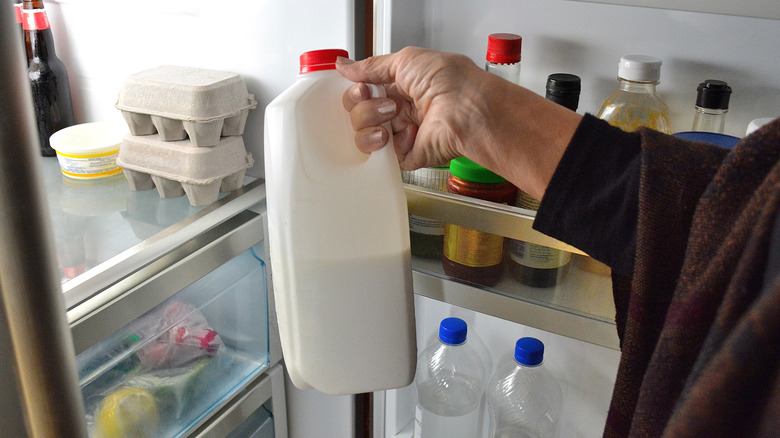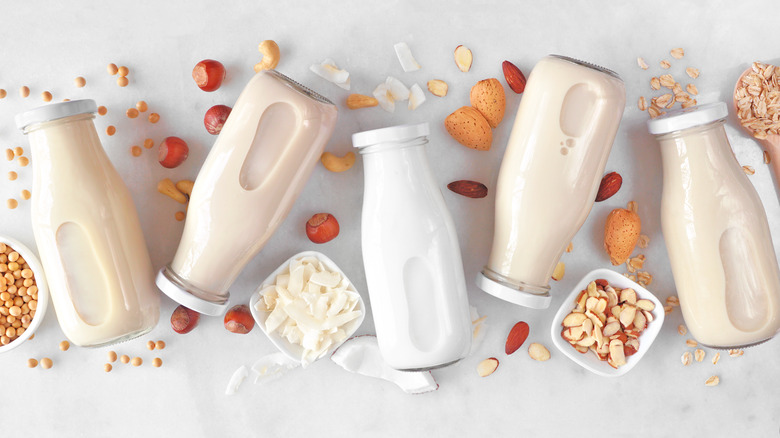How Long Can Milk Last Out Of The Fridge?
You may have heard that Europeans store their milk at room temperature, but that's not a good idea when buying milk in America. Europe and America use different pasteurization methods that result in milk needing to be stored differently. So, if you're buying milk in America, you'll want to keep your milk in the fridge.
Of course, accidents happen, and you may forget the carton on the counter while you're cooking, but if it's only been sitting out for a short time, you won't need to toss it. As a general rule, milk should not be left out of the fridge for longer than two hours. If the dairy product is allowed to sit out at room temperature for extended periods, it could grow bacteria and become unsafe to drink. Ideally, the milk should stay at a stable 40 degrees Fahrenheit or colder.
While it may be safe to place the milk back in the fridge after it's sat out for a short time, you should make a point to keep your milk chilled as much as you can. The longer the dairy sits at room temperature, the greater the risk of bacteria growth.
How does heat affect bacteria growth?
Keeping milk cold in the fridge is the best way to prevent bacteria growth and keep it safe to drink. When you purchase cartons from the grocery store, you'll want to grab them from the refrigerated section just before you're ready to check out. If you place it in your cart and then walk around the store, milk has more time to warm up. To keep the milk extra cooled, before you drive home, you can pack the milk with other frozen and refrigerated items to help keep it cool until you can get it in the fridge.
Bacteria like E. coli, staphylococcus, and coliforms can all show up in milk, according to a study published in the Journal of Preventative Medicine and Hygiene. That same study shows that these bacteria are more present during the summer months when temperatures are higher.
There are, however, exceptions. Some dairy-free milk alternatives can sit at room temperature for a little longer in certain cases.
Some non-dairy milks can rest at room temperature
Some plant-based milks are shelf-stable as long as the cardboard cartons are sealed. These don't necessarily need to be refrigerated before opening, and they can remain at room temperature in your pantry until you're ready to open the carton — so long as they're used before the expiration date. However, once the seal has been broken, non-dairy milk must stay in the fridge to maintain peak freshness.
Whether you're using dairy or non-dairy milk, there are a few clear indicators that you can look out for to tell if the milk has spoiled. Bacteria in the milk can create lactic acid, which produces a sour smell. Additionally, spoiled milk can change color and texture. If your milk looks yellow and chunky, you'll want to pour it out.
The next time you take the milk out to add to your dishes, be sure to place the carton back in the fridge as soon as possible. The longer the dairy sits out at room temperature, the greater the risk of bacteria growth.


